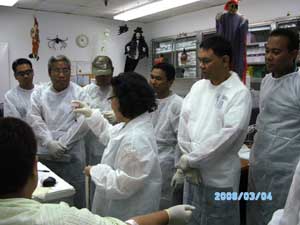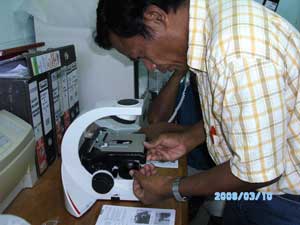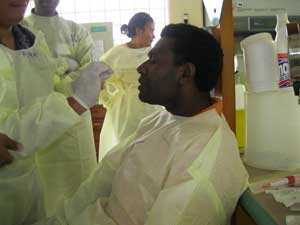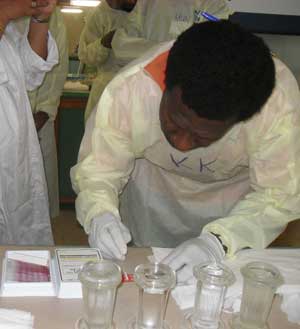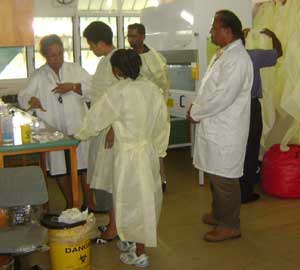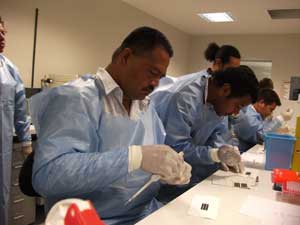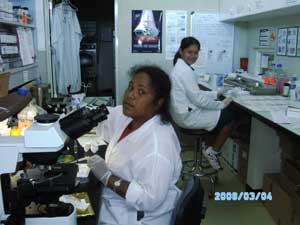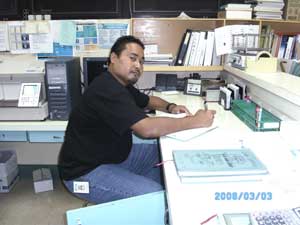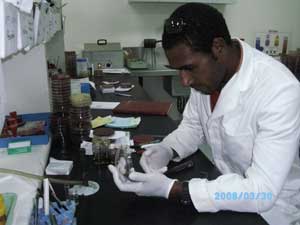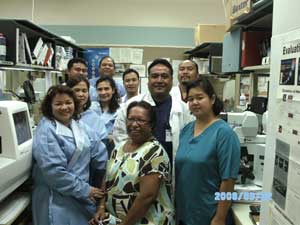LabNet
Introduction
LabNet was inaugurated at a meeting in Noumea, New Caledonia, in April 2000.
It is a three-level network of laboratories (L1, L2 and L3), where ‘level’ refers not to the capacity of the lab but to its role in the network.
L1 labs are the labs of the PPHSN member countries and territories. This level is the closest to patients and clinicians facing an outbreak alert. L1 labs collect samples from patients in suspect cases and when possible use screening tests. They should have ready access to L2 or L3 lab confirmation services for selected diseases.
L2 regional labs perform the first level of confirmation testing for some L1 labs. The techniques they employ require more training and equipment than those used at L1 labs. They are further supported by L3 labs. L2 regional labs also serve as L1 labs for those countries or territories in which they are located.
L3 labs are reference laboratories. They are usually internationally recognised labs (e.g. WHO-associated centres) located in the Pacific rim countries (mainly Australia, New Zealand and USA). In addition to the L2 disease-specific role, they usually perform more sophisticated, less urgently needed tests, providing important epidemiological information for the region or in the context of the worldwide surveillance of major diseases (such as dengue virus genotyping, influenza subtyping or Leptospira serogrouping).
LabNet gives recommendations and support for shipping and testing of specimens and has a dedicated email communication list (PacNet-Lab).
A Technical Working Body (TWB), was created for the facilitation and coordination of LabNet development. This working group has been revived with new members and revised terms of references (see the outcomes of the teleconference organised in April 2011) .
Contact:
For any further information please contact the Technical Working Body
Resources
Articles published in Inform’ACTION:
• Developing sustainable influenza surveillance networks in the Pacific, 2012
• Assessment of NS1 antigen detection tests during DEN-4 epidemic in French Polynesia, 2012
Surveys
- Leptospirosis survey in the Pacific: Progress report, August 2004 (PDF, 35 KB)
- Multi-centre Survey on Incidence and Public Health Impact of leptospirosis in the Pacific (PDF, 62 KB)
Evaluations of Reagents
In 2004, the Pasteur Institute of New Caledonia and the State Hospital in Yap (FSM) carried out a study to evaluate a new rapid test for dengue serology. The results of the evaluation have been published in WHO Dengue Bulletin – Vol 29, 2005
In August 2002, the Pasteur Institute of New Caledonia performed evaluations of existing rapid diagnostic kits for leptospirosis and dengue. The results are detailed in the reports below:
- Evaluation of reagents for the serological diagnosis of Dengue – New Caledonia Pasteur Institute (PDF file, 457 KB)
- Evaluation of reagents for the serological diagnosis of Leptospirosis – New Caledonia Pasteur Institute (PDF file, 547 KB)
Laboratory Assessments
- Report of a consultation: Pacific Public Health Laboratory Review in Guam, Saipan, Pohnpei, Majuro and Honolulu, 9–13 February 2004 (PDF, 52 KB) or (Word, 139 KB)
- LabNet: Laboratory technical re-assessment – Level 1 laboratories – 2003 (PDF, 46 KB) or (Word, 156 KB)
Photos
